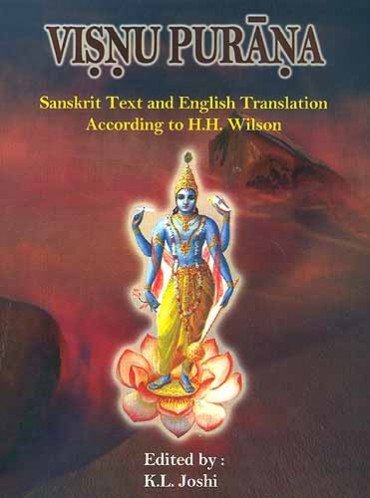The Vishnu Purana
by Horace Hayman Wilson | 1840 | 287,946 words | ISBN-10: 8171102127
The English translation of the Vishnu Purana. This is a primary sacred text of the Vaishnava branch of Hinduism. It is one of the eighteen greater Puranas, a branch of sacred Vedic literature which was first committed to writing during the first millennium of the common era. Like most of the other Puranas, this is a complete narrative from the cr...
11. The Linga Purāṇa
11. Liṅga Purāṇa. “Where Maheśvara, present in the Agni Liṅga, explained (the objects of life) virtue, wealth, pleasure, and final liberation at the end of the Agni Kalpa, that Purāṇa, consisting of eleven thousand stanzas, was called the Laiṅga by Brahmā himself[1].”
The Liṅga Purāṇa conforms accurately enough to this description. The Kalpa is said to be the Īśāna, but this is the only difference. It consists of eleven thousand stanzas. It is said to have been originally composed by Brahmā; and the primitive Liṅga is a pillar of radiance, in which Maheśvara is present. The work is therefore the same as that referred to by the Matsya.
A short account is given, in the beginning, of elemental and secondary creation, and of the patriarchal families; in which, however, Śiva takes the place of Viṣṇu, as the indescribable cause of all things. Brief accounts of Śiva's incarnations and proceedings in different Kalpas next occur, offering no interest except as characteristic of sectarial notions. The appearance of the great fiery Liṅga takes place, in the interval of a creation, to separate Viṣṇu and Brahmā, who not only dispute the palm of supremacy, but fight for it; when the Liṅga suddenly springs up, and puts them both to shame; as, after travelling upwards and downwards for a thousand years in each direction, neither can approach to its termination. Upon the Liṅga the sacred monosyllable Om is visible, and the Vedas proceed from it, by which Brahms and Viṣṇu become enlightened, and acknowledge and eulogize the superior might and glory of Śiva.
A notice of the creation in the Padma Kalpa then follows, and this leads to praises of Śiva by Viṣṇu and Brahmā. Śiva repeats the story of his incarnations, twenty-eight in number; intended as a counterpart, no doubt, to the twenty-four Avatāras of Viṣṇu, as described in the Bhāgavata; and both being amplifications of the original ten Avatāras, and of much less merit as fictions. Another instance of rivalry occurs in the legend of Dadhīci, a Muni and worshipper of Śiva. In the Bhāgavata there is a story of Ambarīṣa being defended against Durvāsas by the discus of Viṣṇu, against which that Śaiva sage is helpless: here Viṣṇu hurls his discus at Dadhīci, but it falls blunted to the ground, and a conflict ensues, in which Viṣṇu and his partisans are all overthrown by the Muni.
A description of the universe, and of the regal dynasties of the Vaivaswata Manvantara to the time of Kṛṣṇa, runs through a number of chapters, in substance, and very commonly in words, the same as in other Purāṇas. After which, the work resumes its proper character, narrating legends, and enjoining rites, and reciting prayers, intending to do honour to Śiva under various forms. Although, however, the Liṅga holds a prominent place amongst them, the spirit of the worship is as little influenced by the character of the type as can well be imagined. There is nothing like the phallic orgies of antiquity: it is all mystical and spiritual. The Liṅga is twofold, external and internal. The ignorant, who need a visible sign, worship Śiva through a ‘mark’ or ‘type’—which is the proper meaning of the word ‘Liṅga’—of wood or stone; but the wise look upon this outward emblem as nothing, and contemplate in their minds the invisible, inscrutable type, which is Śiva himself. Whatever may have been the origin of this form of worship in India, the notions upon which it was founded, according to the impure fancies of European writers, are not to be traced in even the Śaiva Purāṇas.
Data for conjecturing the era of this work are defective, but it is more of a ritual than a Purāṇa, and the Paurāṇik chapters which it has inserted, in order to keep up something of its character, have been evidently borrowed for the purpose. The incarnations of Śiva, and their ‘pupils,’ as specified in one place, and the importance attached to the practice of the Yoga, render it possible that under the former are intended those teachers of the Śaiva religion who belong to the Yoga school[2], which seems to have flourished about the eighth or ninth centuries. It is not likely that the work is earlier, it may be considerably later. It has preserved apparently some Śaiva legends of an early date, but the greater part is ritual and mysticism of comparatively recent introduction.
Footnotes and references:
[1]:

Click to view
[2]:
See Asiatic Researches, vol. XVII. p. 287.
